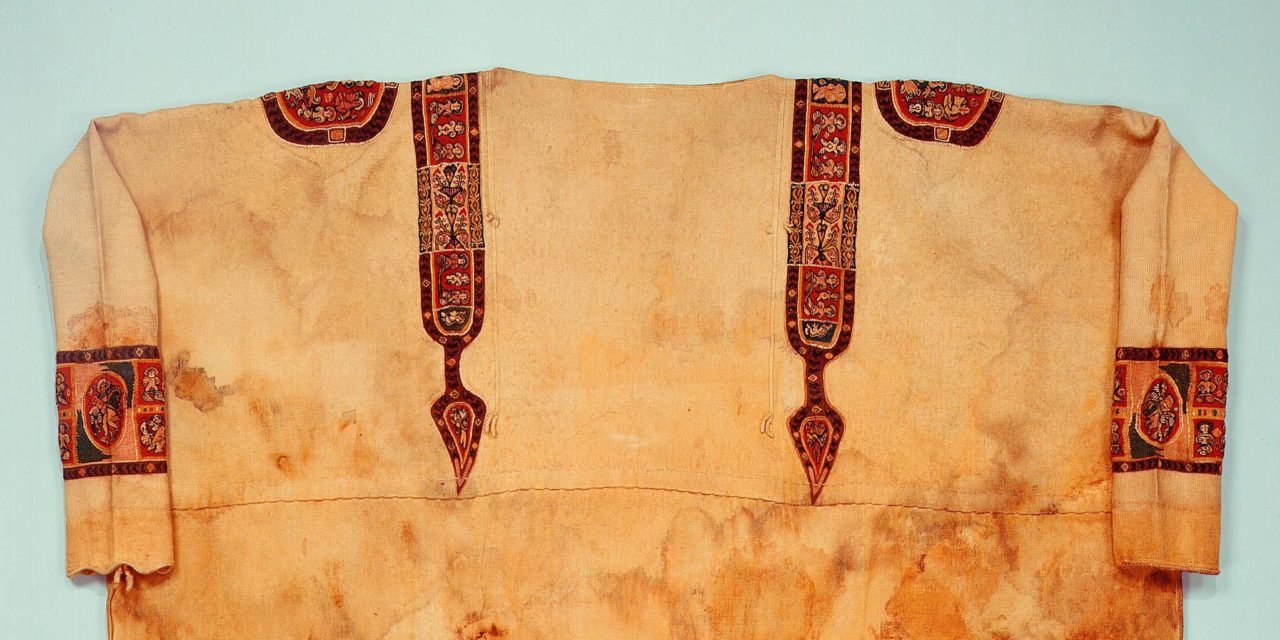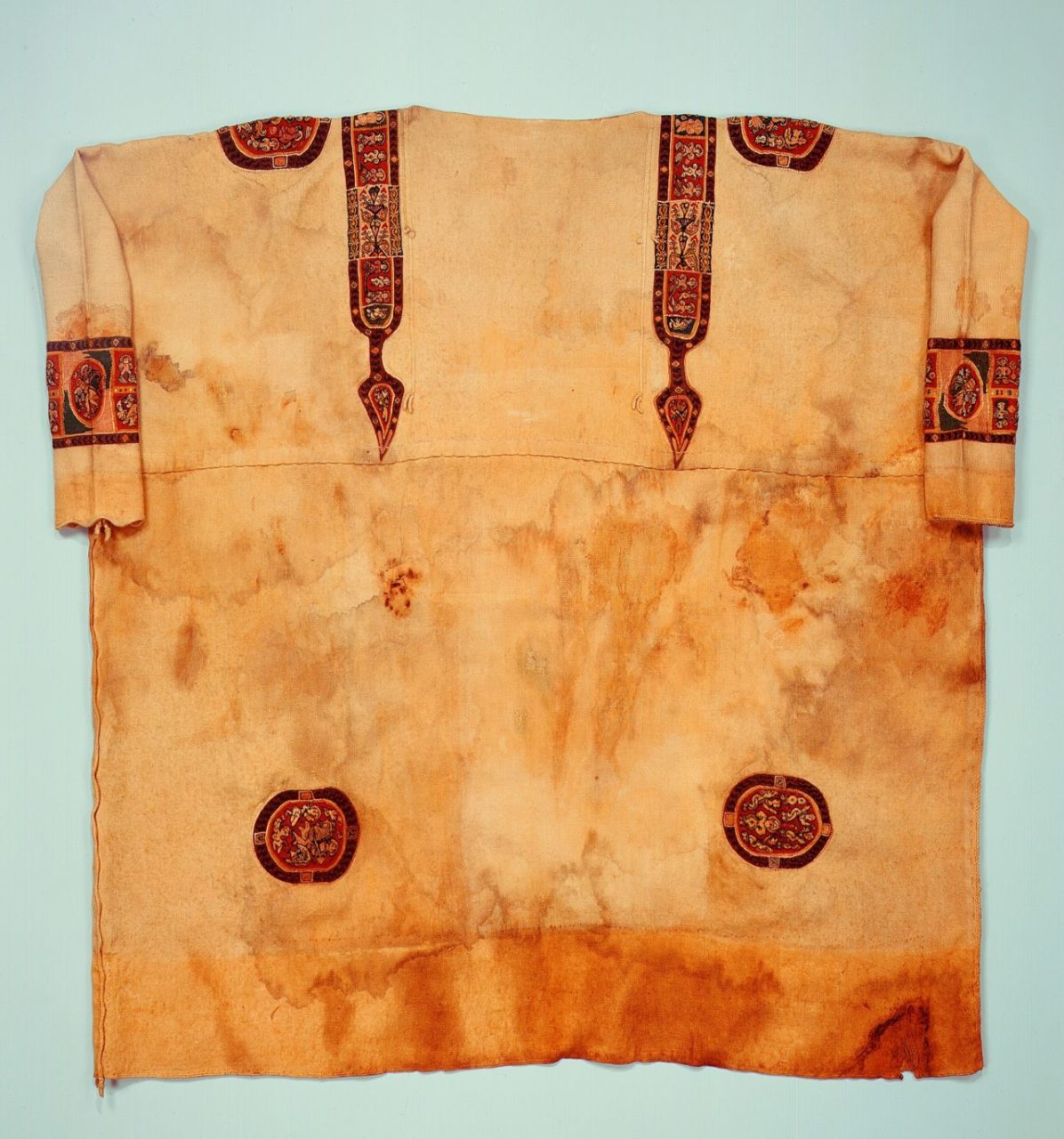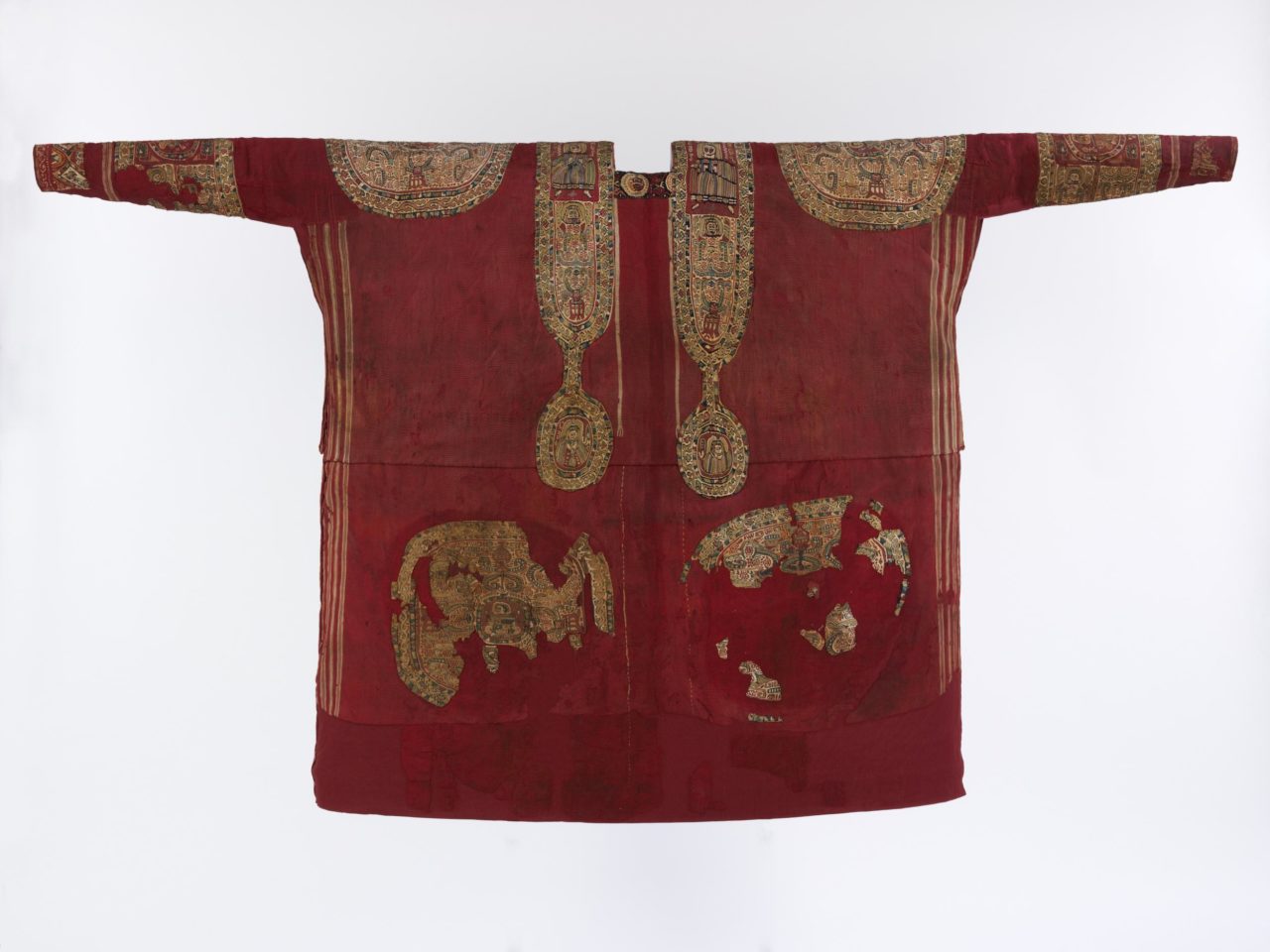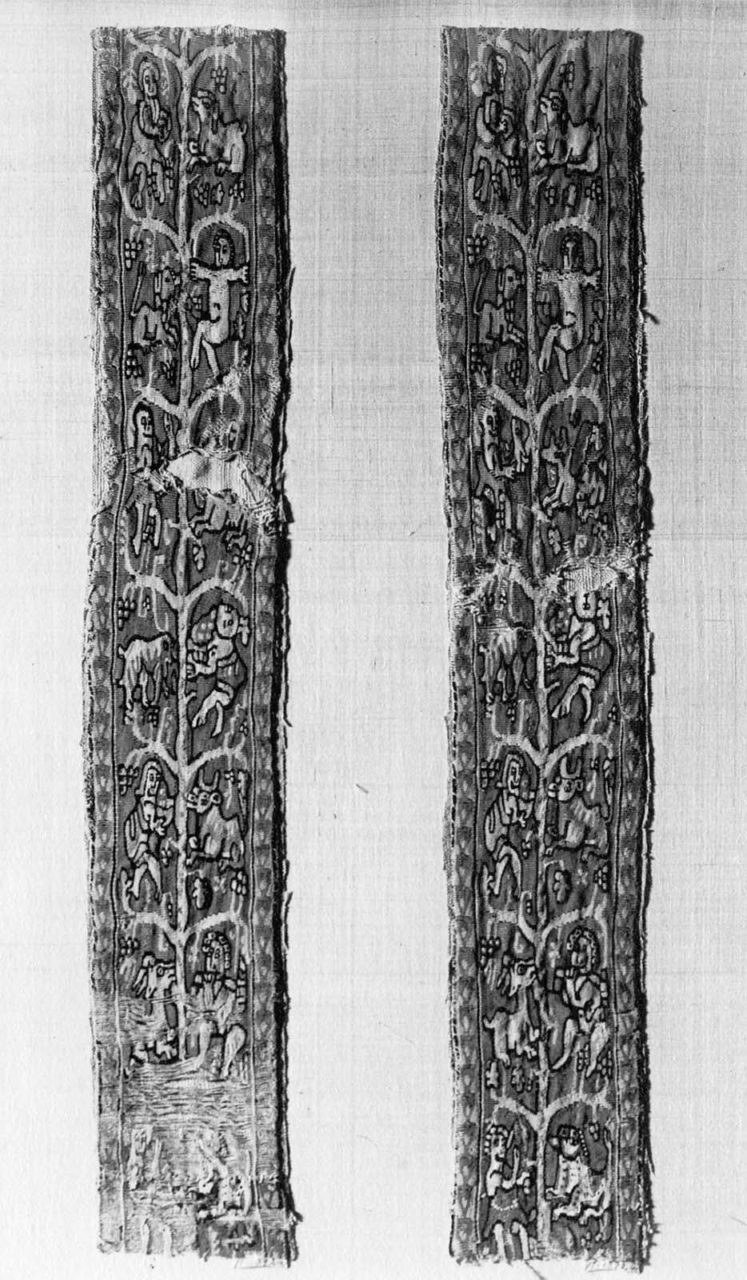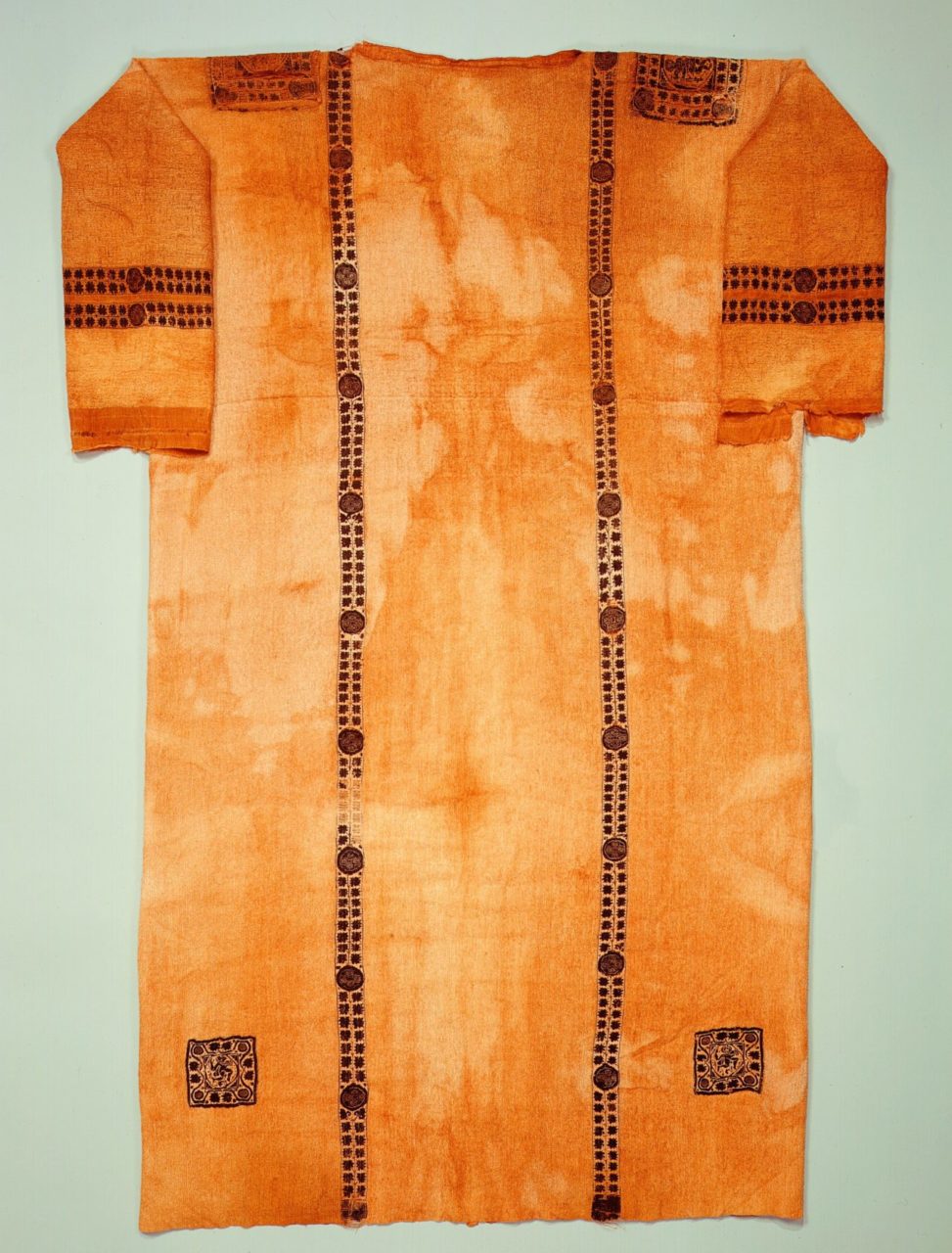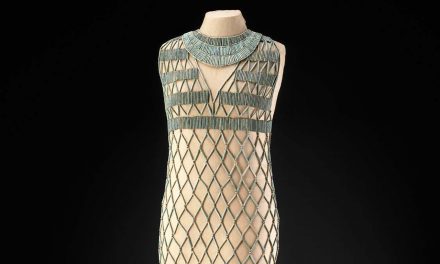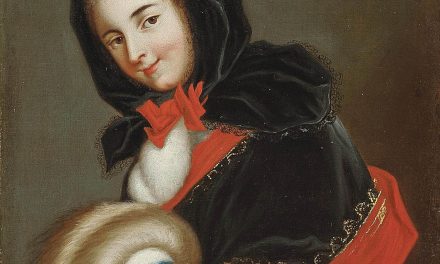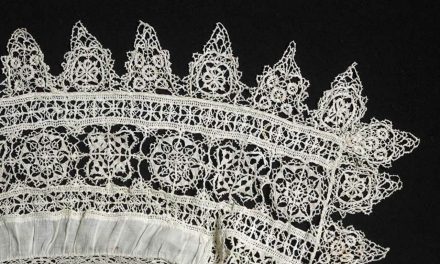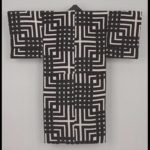Decorative vertical stripes that ran over the shoulder on the front and back of a Late Roman or Byzantine tunic.
The Details
Gillian Vogelsang-Eastwood and Tineke Rooijakkers discuss the significance of clavi in the early Roman era in the Berg Encyclopedia of World Dress and Fashion (2010):
“Elite men in the early Roman period donned white garments with purple clavi (two vertical bands running down the front and back). Women, on the other hand, wore clothing in various colors, also with clavi. By the late Roman period, garments were increasingly decorated with borders, roundels (round, rectangular, or star-shaped ornaments) and short clavi. During the Byzantine period that followed, the detail within the roundels and clavi became more ornate and colorful, including floral, animal, and human depictions and showing mythological (often Dionysian) scenes.”
The tunic in figure 1 has short clavi on its shoulders and pairs of roundels on the shoulders and body. These designs were tapestry-woven separately and then applied to the linen.
Sara Pendergast, Tom Pendergast, Drew D. Johnson, and Julie L. Carnagie describe the purpose of the clavi in relation to the chlamys, or tunic, in Fashion, Costume, and Culture: Clothing, Headwear, Body Decorations, and Footwear Through the Ages (2013):
“Chlamys, like the one worn by the man on the left, offered warmth and decoration and were often adorned with clavi, or purple stripes.”
Clavi did not have to be a certain color, though red was popular, and likewise, tunics could be a range of colors (Fig. 2) (The Metropolitan Museum of Art).
Phyllis Tortora and Sara Marcketti describe the function and appearance of clavi in their Survey of Historic Costume (2015):
“Beginning in Republican times, senators were distinguished by their dress. Their tunics (and those of the emperor) had broad purple bands that extended vertically from hem to hem across the shoulders. These bands were called clavi (clah’vee), the plural form of clavus (clah’vus).” (91-92)
A pair of clavi whose tunic is long gone can be seen in figure 3. They are highly detailed, with figures of humans and animals.
Carolyn Bradley describes the function and appearance of a clavus in the Western World Costume (1954) as a:
“scarlet and purple stripe worn on the tunica, showing class distinction, used until the 3rd century; band of embroidery used in 3rd and 4th centuries.” (76)
Most textiles this old no longer show their original colors. Tyrian purple was a bright reddish-purple color, not the violet we think of as ‘purple’ today, and the clavi and roundels on the tunic in in figure 4 may have originally been a similar color.
Herbert Norris describes the appearance and details of clavi in his Ancient European Costume and Fashion (1999):
“Clavi become obsolete as badges of rank. At the end of the first century both clavi lost their significance as badges of rank, since they were used as a fashionable adjunct to the tunica in general, and also worn by women. When the dalmatica came into use, the angustus clavus became its characteristics decoration…During the third and fourth centuries A.D. the clavus was employed not only as a band of plain colour, but frequently as strips of embroidery of beautiful design, or the pattern was woven into the material.” (106)
Fig. 1 - Designer unknown (Egyptian). Richly Decorated Tunic, 660–870 (radiocarbon date, 95% probability). Wool; tapestry weave; textile (including sleeves): 201 cm x 119.1 cm (79 1/8 in x 46 7/8 in). New York: The Metropolitan Museum of Art, 12.185.2. Gift of Maurice Nahman, 1912. Source: MMA
Fig. 2 - Designer unknown (Egyptian). Tunic, 670-870. Plain woven wool, with appliqué ornaments tapestry-woven in coloured wool and linen on linen warps; 131 cm x 209 cm (including sleeves). London: The Victoria and Albert Museum, 291-1891. Source: VAM
Fig. 3 - Designer unknown (Egyptian). Two Shoulder Bands (clavi), 7th–9th century A.D.. Linen and wool; 10 x 62 cm (3 15/16 x 24 7/16 in). Boston: Museum of Fine Arts, 17.1392a-b. Denman Waldo Ross Collection. Source: MFA Boston
Fig. 4 - Artist unknown (Egyptian). Tunic, probably 5th century. Linen, wool; 169 x 140 cm (66.5 x 55 in). New York: The Metropolitan Museum of Art, 26.9.6. Gift of Edward S. Harkness, 1926. Source: MMA
Its Afterlife
Fig. 5 - Rabbi Yacov Kopel Sviyetchkovski (Bialystok County, North-Eastern Poland). A prayer shawl, 1930-1999. Cotton/wool. Poland: Talitnia. Source: Talitnia
References:
- Bradley, Carolyn Gertrude. Western World Costume: An Outline History. New York: Appleton-Century-Crofts, 1954. http://www.worldcat.org/oclc/869525207
- Norris, Herbert. Ancient European Costume and Fashion. Mineola, NY: Dover Publications, 1999. http://www.worldcat.org/oclc/868965798
- Pendergast, Sara, Tom Pendergast, Drew D. Johnson, and Julie L. Carnagie. “Greek Clothing.” In Fashion, Costume, and Culture: Clothing, Headwear, Body Decorations, and Footwear Through the Ages, 2nd ed., 111-126. Vol. 1, The Ancient World. Detroit: UXL, 2013. Gale Virtual Reference Library (accessed September 12, 2018). http://libproxy.fitsuny.edu:2540/apps/doc/CX2760000033/GVRL?u=fitsuny&sid=GVRL&xid=48be6415
- Tortora, Phyllis G., and Sara B. Marcketti. Survey of Historic Costume. Sixth edition. New York: Fairchild Books, 2015. http://www.worldcat.org/oclc/972500782
- Vogelsang-Eastwood, Gillian, and Tineke Rooijakkers. “Egypt: Historical Dress.” In Berg Encyclopedia of World Dress and Fashion, eds. Joanne B. Eicher and Doran H. Ross, 172–179. Oxford: Berg Publishers, 2010. Accessed September 12, 2018. http://dx.doi.org/10.2752/BEWDF/EDch1025

